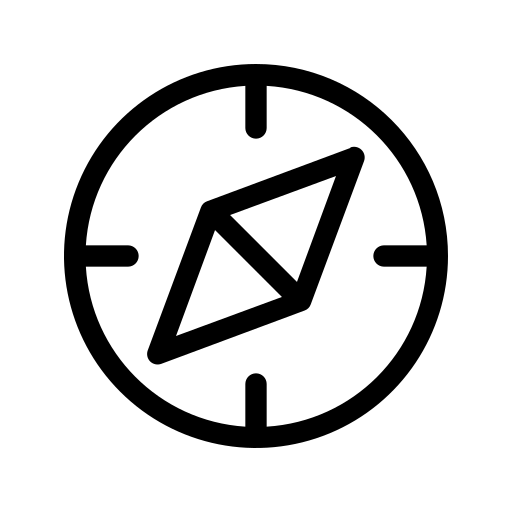The Short Langtang Valley Trek from Kathmandu is a popular choice for those looking for a shorter trek in the Langtang Region near Kathmandu. Looking for a unique travel experience where you can explore mountains and go on a thrilling trekking journey? If yes, then this is the perfect trip for you. This trek is ideal for those who want to experience the breathtaking highlands of Nepal and get an up-close view of the majestic mountains. It can be completed within a week, making it an ideal choice for travellers looking to make the most of their time in Nepal. This trek is a 6-day adventure that begins in Kathmandu and ends in Kathmandu. Those who are travelling to Nepal and have some leisure time can join this trek and witness the hidden gem. Nepal offers a fascinating culture and breathtaking natural beauty just waiting to be explored in this Langtang region.
This trek offers the opportunity to explore the closest trekking region to Kathmandu, where you can witness the stunning geography of Nepal and immerse yourself in the rich Tibetan culture. The journey also promises awe-inspiring mountain vistas that will leave you breathless. During your trek, you will encounter serene villages and have opportunities to stop and appreciate the surrounding beauty as you continue your journey. During your trek on the trail, you will come across traditional villages, viewpoints, ancient monasteries, and Gompas that showcase the rich culture of the region and its jaw-dropping beauty in nature Here are a few of them:
Syabrubesi - Starting Point of the Trek
Syabrubesi, also known as the gateway to Langtang, is nestled at an elevation of 2,380m above sea level, nestled in a picturesque gorge-like terrain, nestled between two hills. Syabrubesi is a picturesque village nestled within the Langtang National Park. Furthermore, it is a well-known path for religious pilgrimages and a significant route to Tibet, particularly Lhasa, as it is located on the border of Nepal and Tibet (Kyirong/Southern Tibet). Syabrubesi is situated approximately 120 km from Kathmandu and can be easily accessed via a well-maintained road, although there are a few rough patches along the way. This place is a popular stop for trekkers exploring the Langtang region. It's a great spot to acclimatise before continuing the trek and to rest before starting the journey.
Langtang Village
Langtang Village is one of the villages that you will come across during the trek and where you will spend the night. It is a place where you can find accommodation facilities, although it is a rural area with limited amenities. The location of this place is at an elevation of 3,400m in a stunning natural landscape. It boasts astounding mountains like Langtang Lirung and is surrounded by several glaciers and lakes within the Langtang National Park. In the village, you will find a rich culture where the locals predominantly practice Tibetan Buddhism and are known as "Langtangpo" due to their residence in the Langtang region. The place offers a wonderful opportunity to immerse oneself in the local culture and traditions. In addition to the rich cultural experiences, the landscape of this location is truly remarkable, with majestic mountains surrounding the village and vast yak pastures spread throughout.
Kyanjin Gompa
Kyanjin Gompa is a highly sought-after destination on the Langtang Valley trek, situated at an impressive altitude of 3,870m. From this vantage point, trekkers are treated to spectacular views of impressive mountain ranges, including Langtang Lirung, Changbu, Yubra, and numerous other smaller peaks. The village is home to a remarkable Tibetan-style religious site dedicated to Tibetan Buddhism, which gives it the distinctive name of Kyanjin Gompa. This place is the perfect choice for an overnight stay before heading to the Ganja La Pass of Kyanjin Ri, which offers an outstanding panorama of the Langtang valley. The village is named after the centuries-old Kyanjin Gompa, a monastery that holds great significance. This is also the highest human settlement in Langtang Valley.
Kyanjin Ri Hill
Kyanjin Ri is a small hill situated at an impressive altitude of 4,773m/15,655 ft above sea level. It is a prominent highlight and the highest point in the Langtang Valley Trek. The Langtang valley offers a staggering vantage point, allowing you to fully appreciate the gorgeous scenery and majestic mountains. Kyanjin Ri offers a breathtaking view of the valley, with its stunning mountains, landscape, and hills. The beauty of Kyanjin Ri is truly remarkable, with countless layers of natural wonders waiting to be discovered. The location is situated north-east of Kyanji Gumba, approximately 3 km from the settlement. The viewpoint offers an enchanting view of the stunning landscape, showcasing majestic mountains like Langtang Lirung, Makalu, Lhotse, Cho Oyu, and numerous other peaks.
What to expect?
The Short Langtang Village trek from Kathmandu is one of the most popular and astonishing treks in Nepal, located near Kathmandu. This trek is perfect for those who are already in Nepal and want to explore and gain some trekking experience during their leisure time. This trek provides a remarkable opportunity to experience the unique Tibetan Buddhist culture in the Langtang region, which is closely connected to Tibet. You will have the chance to witness the beauty of ancient monasteries and immerse yourself in the rich cultural traditions influenced by this neighbouring region. The landscape you will encounter is truly outstanding, with lush green hills and wide yak pastures where domesticated yaks roam and graze. The people here are known for their warm and welcoming nature, ensuring you receive the finest local hospitality.
During your trek, you will have the opportunity to witness the awe-inspiring splendour of the majestic mountains, experience stunning sunrises, and enjoy panoramic views of the valley from the viewpoint. It's truly a remarkable experience. This place near Kathmandu offers the opportunity to witness majestic mountains and immerse yourself in a unique cultural experience, all within a few days. The trek is suitable for all levels of hikers, with a trail that is well-maintained and takes about 4-6 hours of walking each day. This trek is perfect for those who want to witness and absorb themselves in the beauty of the mountains, making it an ideal starting point for their trekking adventure.
What makes this trek different?
The Short Langtang Valley Trek from Kathmandu offers a convenient and accessible journey to the stunning Langtang Valley, just a few kilometres away from Kathmandu. It is one of the most easily reachable trekking regions in Nepal from Kathmandu. This trek is perfect for seasoned trekkers and those who long to witness the breathtaking beauty of snow-capped mountains up close. This trek might be short, but the experience it provides is truly remarkable. You will witness the incredible and distinctive geography firsthand as you journey from the bustling city of Kathmandu to the tranquil small settlements in the rural area of Langtang. The transformation is truly captivating.
Once you set out on your journey, you will be fascinated by the incredible and vibrant culture that has been heavily influenced by Tibet. This is due to the region's close proximity to both Nepal and Tibet. The landmark is truly impressive, offering spectacular vistas from different perspectives. Additionally, you can explore centuries-old monasteries in the villages along the way to Langtang, adding to the cultural experience. Set out on an absolutely special trekking adventure in Nepal, where you'll be immersed in the rich culture and phenomenal natural beauty of this remarkable country. Join us on an unforgettable journey and discover the wonders of Nepal.


 Adventure
Adventure
 Couple
Couple
 Family
Family
 Luxury
Luxury
 Motorbike
Motorbike
 Photography
Photography
 Wildlife
Wildlife
 Yoga
Yoga
 Annapurna
Annapurna
 Langtang
Langtang
 Dolpo
Dolpo
 Eastern Nepal
Eastern Nepal
 Everest
Everest
 Manaslu
Manaslu
 Western Nepal
Western Nepal





